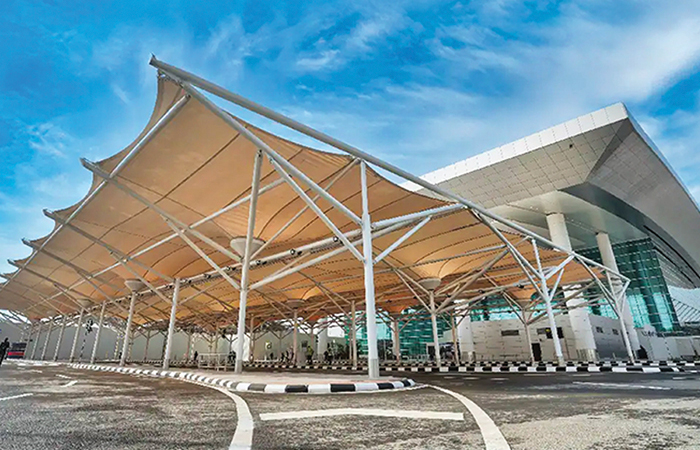A portion of the roof of Terminal-1 at Indira Gandhi International Airport collapsed following heavy rains in Delhi recently. The incident, happening at a time when the airport is undergoing renovation for the past two years to become one of the biggest international hubs in the world, raises questions about the state of aviation infrastructure in the country.
Subir Ahluwalia
The incident of roof collapse came as a surprise for many because the revamped Terminal 1 (T1) of Delhi Airport was relaunched virtually by the Prime Minister in March this year. In fact, the Delhi International Airport Limited (DIAL) had planned to commence operations of the expanded Terminal 1 in June itself, apart from enhancing international traffic capacity, as per details shared at the CAPA Aviation Summit recently.
The Union Ministry of Civil Aviation has clarified that the airport building that bore the brunt was an old one and had opened in 2009. Yet, the collapse casts a shadow over the government’s ambitious plans.
Status check
Indira Gandhi International Airport (IGIA) boasts an annual capacity of 100 to 105 million passengers, with international passenger capacity at approximately 22 million. The airport includes three terminals: T1, T2, and T3.
Videh Kumar Jaipuriar, CEO, DIAL, said, “We have around 20 per cent of transit or connecting passengers, whether domestic to international or domestic to domestic, and some segments are experiencing faster growth. Last year, the airport handled close to 20 million international passengers. We have a capacity of 22 million and that is only a headroom of 10 per cent. We need to increase that capacity because we expect that the growth will be at least 8-10 per cent. We have to be ahead of the curve,” he said.
Need for a Master Plan
DIAL’s 10-year master plan, designed in consultation with airlines and stakeholders, aims to accommodate the expected growth in traffic. Large orders by Air India and IndiGo, including wide-body planes, will further cement Delhi Airport’s status as India’s premier international aviation hub. Given the rapid changes in the aviation industry over the past five to six years, DIAL has wisely accelerated its master plan, initially slated for 2026. “We are open to options such as dedicated terminals for specific airlines or dedicated terminals for international and domestic connections,” Jaipuriar said.
Furthermore, DIAL plans to increase international passenger handling capacity by 40 to 50 per cent. By July, the airport is expected to have four fully operational runways, with one side of the fourth runway being CAT III compliant, which allows flights to land in poor visibility.
Innovation on cards
The airport’s airside capacity, currently accommodating 1,500 slots per day, could potentially increase by 500-600 slots daily. With 84 aircraft movements per hour currently, DIAL foresees the possibility of exceeding 110 movements after runway optimisation. DIAL is also implementing the Airport Operations Centre (APOC) system, designed to collect data and estimate passenger footfall during specific periods, which will help decongest the airport during peak hours. Plans to connect Terminals 1 and 3 with automated people mover (APM) systems are underway, although funding challenges remain. “We have done the commercial evaluation of APM. We expect that some funding will be required. We may approach the government for one-time funding support for APM. The infrastructure is owned by the Airports Authority of India (AAI), and we are just the operator,” Jaipuriar mentioned.
Way forward
The collapse at Delhi Airport’s Terminal 1 is a stark reminder of the urgent need for robust, well-maintained infrastructure. As India aims to position itself as a global aviation hub, ensuring the safety and reliability of its airports must be a top priority. The future of India’s aviation sector depends on it.
 TravTalk India Online Magazine
TravTalk India Online Magazine








